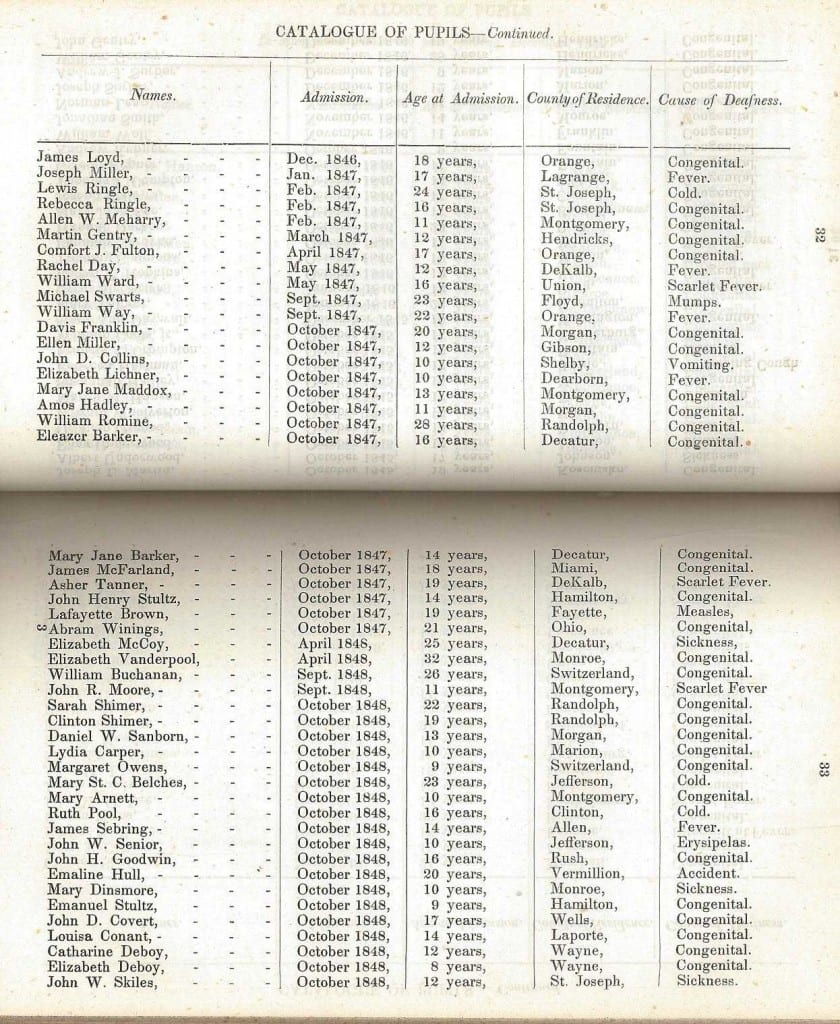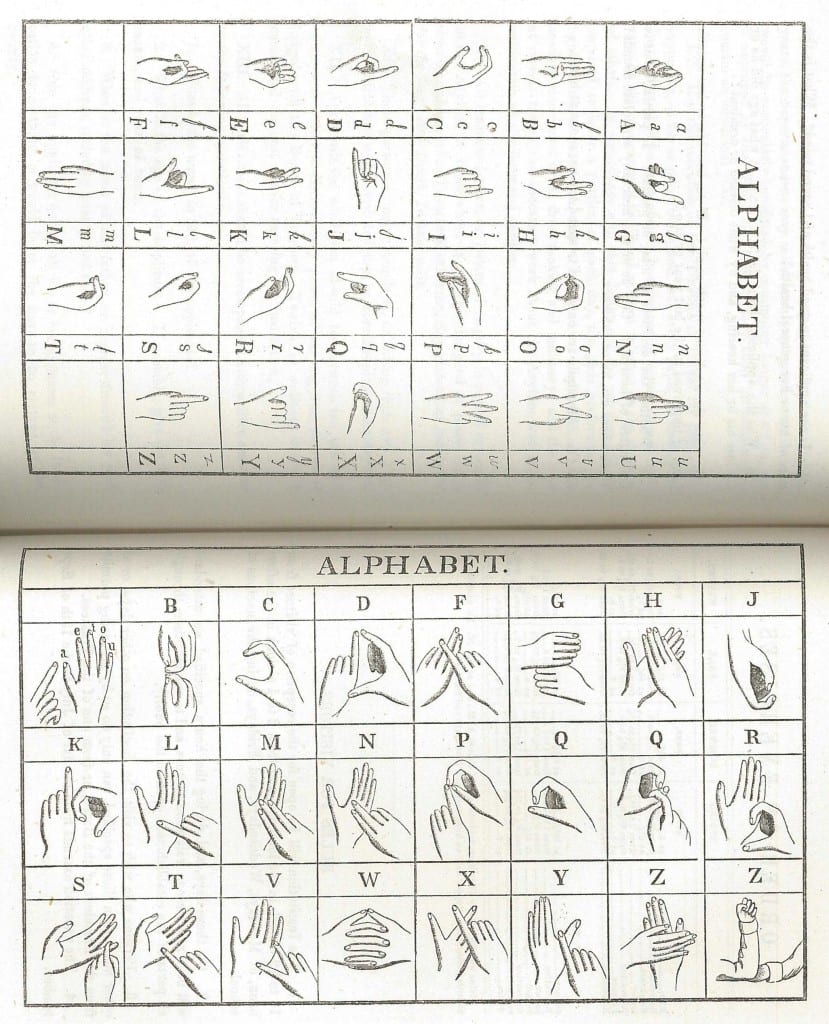“we were enabled to ward off the small-pox” – The Indiana Asylum
By H Dominic W Stiles, on 20 March 2015
To show that our collection is not merely parochial but of international interest, we have a visit to our American cousins today.
I discovered that we have two overlapping bound volumes of the Indiana Asylum for the Education of the Deaf and Dumb. The paper is beautiful in quality, the annual reports were printed and bound together in 1855, ten years after they were produced. The Asylum took young people between the ages of ten and thirty, which seems quite an interesting age bracket, but quite progressive when you consider how difficult the transition from youth and dependence to maturity and independence is for young people anyway, and perhaps more so for Deaf young people.
The building is impressive and substantial looking, and the state levied a property tax in order to build it. Its founder, William Willard, was a pupil of Laurent Clerc.
There are lists of pupils, stating the (supposed) cause of their deafness. These would be interesting to analyse as they present a substantial data set.
 One of the charms of this type of publication, is the stories they published that were written by the pupils. Here is one –
One of the charms of this type of publication, is the stories they published that were written by the pupils. Here is one –
By a Boy Two Years Under Instruction
A boy was walking along the road and he met a drunkard. He laughed at the drunkard, and he threw his bottle at him and hurt him much. A man ran and carried him home. His mother was troubled and called the doctor. The doctor came and put some court-plaster on his head, and he got well again and he ran about the city. His mother told him he must not laugh at the drunkard, for if you will laugh at the drunkard he will kill you. The boy obeyed his mother. (1854 p.63)
 The Institute’s physician, Livingston Dunlap, shows frustration in his November 1st 1854 report, when during a smallpox outbreak, he vaccinated the scholars, only to find that “a thoughtless woman came with a child while laboring under genuine varioloid to the asylum – and in a few days, the 23rd of March, five girls showed evidence of having varioloid; it spread immediately among the girls and boys until twenty-six were down with the disease, and continued until the 26th April, at which time they were all capable of attending to their duties in school. By the timely application of the vaccination, we were enabled to ward off the small-pox and have the varioloid*, which has terminated so favorably, that no deformity was left upon the fac, nor any other undesirable result.” (p.43, 1854)
The Institute’s physician, Livingston Dunlap, shows frustration in his November 1st 1854 report, when during a smallpox outbreak, he vaccinated the scholars, only to find that “a thoughtless woman came with a child while laboring under genuine varioloid to the asylum – and in a few days, the 23rd of March, five girls showed evidence of having varioloid; it spread immediately among the girls and boys until twenty-six were down with the disease, and continued until the 26th April, at which time they were all capable of attending to their duties in school. By the timely application of the vaccination, we were enabled to ward off the small-pox and have the varioloid*, which has terminated so favorably, that no deformity was left upon the fac, nor any other undesirable result.” (p.43, 1854)
*Varioloid is a milder form of smallpox in those who have had it or been vaccinated.
Indiana Asylum for the Education of the Deaf and Dumb Annual Reports 1-15, and 11-24
 Close
Close

